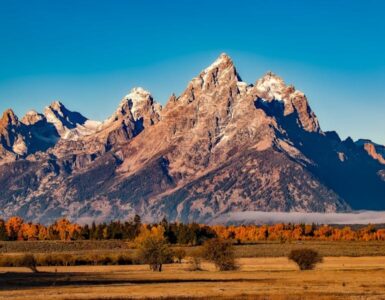A resolution dubbed the “Green New Deal” that calls for the United States to achieve net-zero greenhouse gas emissions over the next decade is under attack for being unrealistic and even “ridiculous.”
Critics say the proposal is too extreme – almost bizarre – in sections. For example, the climate change resolution calls for upgrading “all existing buildings” in the country, “repairing historic oppression” for a long list of groups, and “strengthening labor unions.”
Two freshman Democrats, Rep. Alexandria Ocasio-Cortez and Sen. Edward Markey, introduced twin versions of the resolution in both the House and Senate last Thursday. It is named after the New Deal of 1933 that Congress passed to pull America out of the Great Depression.
The non-binding New Green Deal calls for massive public investment in renewable energy and infrastructure and promises the creation of millions of high-wage jobs.
It also calls for the phasing out of nuclear power that many physicists and energy experts say would be futile if the goal is to decarbonize.
“Nuclear energy provides more than 56 percent of America’s carbon-free electricity. We need deep decarbonization to hit our climate goals,” states the Washington, D.C. Nuclear Energy Institute, a leading policy organization for nuclear technologies industries. “As our largest source of clean energy, nuclear power is critical to reduce carbon emissions.”
The resolution represents the first time the goals of the broad environmental movement have been outlined in an official congressional document, reports Utility Dive magazine, a leading news publication for the electric utility industry.
While there is support in the House, it is doubtful to go far in the Republican-controlled Senate. Senate Majority Leader Mitch McConnell, however, agreed Tuesday to take it to a vote to give everyone a voice.
Robbie Aiken, vice president of federal affairs for Pinnacle West Capital Corporation that owns Arizona Public Service (APS) and operates the Palo Verde nuclear power plant, said this deal “goes too far.”
“I thought I had heard it all until I heard this,” Aiken said. “It’s sort of ambiguous. It’s basically a stream of consciousness with goals which are laudatory but I don’t think it’s ready, even for the Democratic Congress. Those of us who watch Capitol Hill haven’t seen much support beyond the very far outskirts of the Democratic party.”
Ernest Moniz, President Barack Obama’s former energy secretary, agreed. In an interview with National Public Radio, Moniz said the proposal is “just impractical.”
“We cannot strand too many assets and, frankly, strand too many workers with impracticable unrealizable objectives,” Moniz said. “We will jeopardize what I think has been the very significant movement of the large energy companies toward developing their new business models to function in a low carbon world.”
In Arizona, the deal would threaten the Palo Verde plant that generates enough carbon-free energy for up to 4 million homes. According to APS, power generation operations to date at the plant have offset the emission of almost 484 million metric tonnes of carbon dioxide, the equivalent of taking up to 84 million cars off the road for one year, more than 253,000 tonnes of sulfur dioxide, and 618,000 tonnes of nitrogen oxide.
If the New Green Deal were attempted nationally, it would actually increase greenhouse gas emissions, said California environmentalist and pro-nuclear advocate Michael Shellenberger, who used terms like “ridiculous” and “climate fakery” in a series of tweets after the resolution was introduced.
“Anyone who is calling for phasing out nuclear is a climate fraud perpetuating precisely the gigantic “hoax,” tweeted Shellenberger, president of the Environmental Progress think tank and a former Time Magazine Hero of the Environment and Green Book award winner.
“Countries cannot become ‘climate neutral’ without nuclear energy,” Shellenberger said Tuesday after returning from the Netherlands where he was asked to speak on the benefits of nuclear power. “We sooner or later find out that there is no other solution.”
Shellenberger, who once opposed nuclear energy, has discovered through research that places like Germany and France with renewable energy agendas, are not seeing reductions in greenhouse gases. That’s because when the wind does not blow and the sun is not shining, countries and states are having to turn to natural gas plants that produce emissions.
They also are seeing higher electricity rates, which hurts low-income populations, he said.
In Arizona, utility companies have been steadily increasing renewable energy technology and investment, Aiken said.
“The marketplace is booming in the right direction. It’s all positives,” he said. “We have a great story to tell. APS and other utilities are part of that good story and we’re moving in a good direction as we’re providing clean, affordable and reliable electricity.”
















Add comment